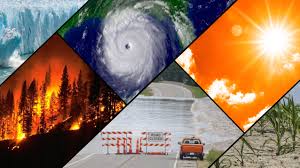Series on Ukraine War
Part 01
War in Donbass
The conflict in Ukraine, often referred to as the "War in Donbass," began in 2014. The root causes of the conflict can be traced back to Ukraine's political situation at the time and the country's relationship with Russia.
In late 2013, protests erupted in Ukraine after then-President Viktor Yanukovych rejected a proposed association agreement with the European Union (EU) in favor of closer ties with Russia. The protests, known as the Euromaidan movement, grew in size and intensity, calling for political reforms and closer integration with Europe.
In February 2014, the situation escalated when violence erupted in the capital city of Kyiv, resulting in the deaths of many protesters. Yanukovych fled the country, and a new government was formed. Russia viewed these events as a threat to its influence in Ukraine and began to take actions in response.
Following Yanukovych's departure, pro-Russian demonstrations started to take place in the eastern and southern regions of Ukraine, particularly in Crimea and Donbass. In Crimea, pro-Russian forces, believed to be Russian military personnel without insignias, seized control of key infrastructure and government buildings. A hastily organized referendum was held in March 2014, in which the majority of voters favored seceding from Ukraine and joining Russia. Russia subsequently annexed Crimea, a move that was widely condemned by the international community. In Donbass, which includes the Donetsk and Luhansk regions, pro-Russian separatists declared independence from Ukraine in April 2014. They established self-proclaimed "People's Republics" and took control of several cities. The Ukrainian government responded by launching a military operation to regain control of the territory. The conflict escalated into a full-scale war, with both sides engaging in military operations, leading to a significant loss of life and displacement of civilians.
The war in Ukraine is complex and involves multiple factors, including political, economic, ethnic, and historical elements. It is important to note that the conflict is not solely a result of internal dynamics within Ukraine but also involves geopolitical tensions and competing interests between Russia and Western countries. Efforts to resolve the conflict have been ongoing, including diplomatic negotiations, ceasefires, and peace agreements such as the Minsk Protocol and the Minsk II Agreement. However, a lasting resolution has proven elusive, and the situation remains tense with periodic escalations in violence.




